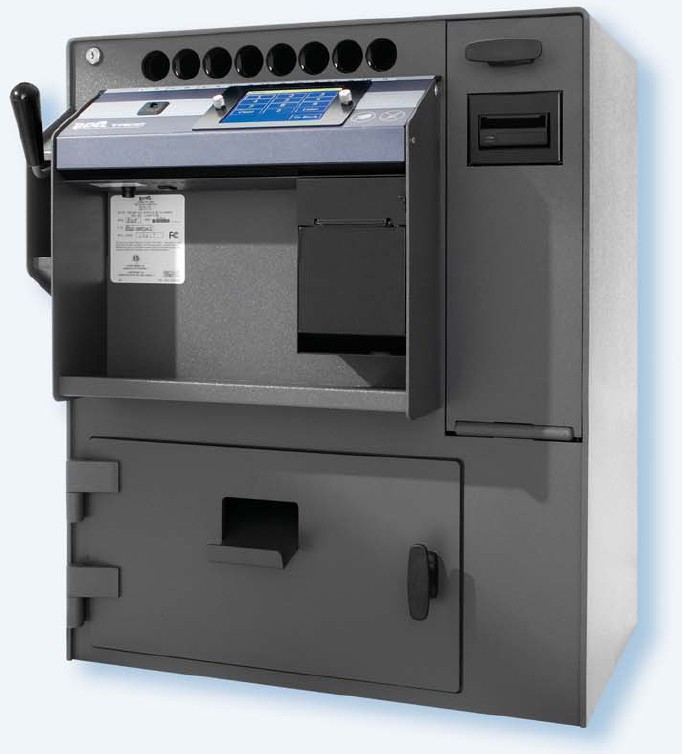Compared with the prominent, high tech side of the security industry, safes have a relatively low profile, yet safe manufacturers have expertise no-one can afford to ignore. Our expert Safes correspondent MIKE PALMER tells us more.
It is a simple fact of life that the relatively ‘low tech’ hardware side of security, that is to say lock and safe makers, are the poor cousins of our industry. You do not have to look very far to see the truth of this observation: visit IFSEC at the NEC, for example, and you will find remarkably few lock manufacturers, no safe manufacturers at all and just a couple of specialist safe distributors – we simply cannot afford to be there.
But just because our side of the industry has a low profile, it does not mean that we do not have anything relevant to teach our ‘high tech’ colleagues. The truth is that they ignore our expertise at their peril.
‘IGNORE OUR EXPERTISE AT YOUR PERIL’
Take the rapid growth in the market for electronic cash deposit and cash recycling systems. The advanced technology present in these systems
must have taken huge chunks of cash out of R & D budgets. These ultra-sophisticated machines recognise foreign currencies and identify the denomination of a bank notes in a twinkling of an eye, storing them instantly in sealed cassettes. They dispense just as quickly, incorporating the latest IP communications technology and advanced computer software.
There are significant markets ready and waiting for this type of product and manufacturer’s product literature tells them everything they need to know about all their remarkably advanced features. Well, almost everything. One of the questions a customer inevitably asks is, “How much can I keep in it overnight?” At which point is seems as though someone licks a finger, holds it in the air and replies, “Oooh, about £20,000 to £30,000”
Of course, they are factually correct. You could quite easily leave £30,000 in it overnight. You could probably squeeze in a bit more if you tried really hard, but that’s not what the customer was asking. They’re not interested in the capacity; what they really needed to know was, “How much will my insurer allow me to leave in it overnight?”
The answer to this question is substantially different. When specialist insurance surveyors took a closer look at the physical construction of some of these extremely expensive systems, it became clear that little if any consideration had been given to their burglar resistance. In fact, some of them offered no more protection than a reasonably priced key cabinet. Other companies could indeed provide optional containers that were actually tested and rated according to EN standards – it was there in the small print – but insurers were under the impression that it was left to the customer to request the option rather than being offered it proactively by the producer. Consequently, if the user was not specifically asked what level of indemnity they would expect their insurer to provide, they were sold the bog standard model.
One senior manager with a major insurer said, “Some users were asking us to insure up to £60,000 in one of these standard systems. When we told them that the maximum cover we were prepared to extend was just £1,000 – the same as we would give a lockable filing cabinet, they were more than a little disappointed.”
Certainly, if the unit is to be used solely as a ‘day safe’ with the cash being removed at the end of the working day and transferred to a fully insured cash safe, it is possible that they could be insured for a £20-30,000 risk. If the cash is not transferred and remains in the deposit or recycling system overnight, it simply won’t be insured.
THE EUROPEAN STANDARD – EN1143-2
Had the designers taken time out to discuss this with anyone familiar with safe-making their attention would have been immediately drawn to EN1143-2, a standard for testing and rating safes with deposit facilities. Deposit safes successfully tested by approved test houses are certified and rated from Grade 0 to Grade VI with corresponding overnight cash limits from £6,000 to £150,000. Any safe maker would have taken one look at these standard containers and instantly advised the developer that, as it stood, their system was only insurable for £1,000 overnight – not much use in the cash office of a busy bus terminal or superstore.
Things are, however, beginning to change, albeit slowly. One manufacturer of cash recycling systems has already co-operated with a Swedish safe maker to develop and launch a recycling system incorporating a body that has been fully tested and certified in accordance with EN1143-2 to Grade II standard. The Association of Insurance Surveyors (AiS) has agreed that it can be recommended for an overnight cash holding of £17,500 and has granted it their AiS Approved logo. Another producer has the option of a German manufactured Grade III safe suitable to secure £35,000 – but you would be hard pressed to find a reference to it on their website.
One manufacturer has joined Eurosafe UK, the association of safe makers and distributors, in order to tap into their member’s knowledge and experience in developing a tested, certified and suitable graded body.
In the meantime, buyers beware! When a supplier tells you their deposit or recycling systems can hold £30,000 cash overnight, they may well be telling the truth; but what they fail to mention is that it almost certainly will not be insured.
Mike Palmer can be contacted at:
info@mikepalmerconsultancy.co.uk
The Todel Tac. Although technically deposit safes, these are generically known as ‘Cash Recyclers’.

